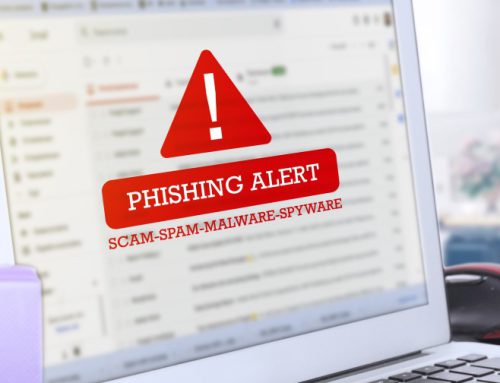All the hard work, investment, and time you’ve dedicated to growing your business are at significant risk due to misinformation and half-truths you may have received from cybersecurity experts, IT providers, or even your insurance company. You may believe your IT team has adequately secured your network, that you’re doing enough to stay protected, or that your insurance will cover any losses or expenses in the event of a breach. You may trust that your staff is operating safely, and that the security tools you’ve paid for are sufficient. Perhaps you think that your bank, credit card processor, or software vendor will assume the risk for payment transactions—or even that your business is too small to be a target.
Worst of all, you might believe that a data breach would be a minor inconvenience with few costs or lasting consequences. A few years ago, these assumptions may have held true—but today, they are dangerously inaccurate. Continuing to rely on these outdated beliefs could expose your business to serious financial risks and far-reaching consequences.
Consider this article your wake-up call. Cyberattacks, insurance coverage, and IT protections have all evolved dramatically in recent years. The security plan you put in place a year or two ago is no longer sufficient to address today’s threats.
We can confidently say that much of what you’ve been told about securing your business from cyber threats is either incomplete or inaccurate. This leaves you exposed to significant risks, and when a breach occurs, those who sold you their “secure” solution will likely be absent, offering no accountability—leaving you to face the fallout alone, with costs coming out of your own pocket.
Don’t wait until after a breach to discover the true impact and say, “Why wasn’t I told about this?”
This isn’t just about securing your data. It’s about ensuring you fully understand the risks associated with cyberattacks, IT failures, or human error, and the potentially devastating costs and consequences to your business. That’s why this article was written—because over the past few years, we’ve found that none of the businesses we assessed before they became clients were adequately prepared for a cybersecurity incident.
Not a single one. Every business we assessed believed they were “secure enough,” severely underestimating the true costs and far-reaching consequences of a data breach. Their trusted team of “experts,” who should have been protecting them, failed to do so. Chances are, you’re in the same situation.
If a breach occurs—and the likelihood of that happening is increasing—it won’t just be an IT issue. Your staff will be overwhelmed by the sheer magnitude of recovery efforts, from dealing with auditors, the Police, and legal teams, to managing the technical cleanup. The financial impact could be devastating, with emergency IT services, legal fees, and other costs quickly mounting. Worse still, your insurance claim may be denied or only partially paid, simply because critical steps outlined in this article were not followed.
This is not an issue to take lightly or assume is under control. Cybersecurity is not something you can simply delegate to your IT director, department, or external provider and hope for the best. Just because you’re spending tens of thousands of dollars on cybersecurity doesn’t guarantee you’re protected. It’s crucial that you understand what true security means and decide what risks you’re willing to accept, because it’s your company’s reputation and financial stability on the line if a breach happens.
Here’s the bottom line: small and mid-sized businesses are the #1 target for cybercriminals, and there are specific reasons for that—reasons we’ll explain in this article. The reality is that you likely don’t have a cybersecurity plan that is 1) comprehensive, 2) practical, and 3) cost-effective. Right now, your security measures are full of holes, and you’re operating without a reliable backup plan.
Now is the time to take control of your cybersecurity and protect what you’ve worked so hard to build.
QUESTION: When was the last time your current IT company had THIS conversation with you? What HAVE they told you about these new threats? Ifthey have been silent, then I would urge you to read this article in full and act on the information urgently.
Don’t think you’re in danger because you’re a “small” business and don’t have anything a hacker would want? That you have “good” people who know better than to click on a bad e-mail or make a mistake? That it won’t happen to you?
“Hackers Won’t Break Into To My Business…We’re Too Small. My Staff Is Too Smart. We’re Good,” You Say?
That’s exactly what cybercriminals are betting on you to believe. They thrive on businesses that assume they’re too small to be a target, making you the perfect victim. Without proper protections—or with inadequate ones—you become easy prey. In fact, small businesses like yours are prime targets because you’re far easier to compromise. Hackers may be unethical, but they are not foolish.
Right now, your business is like a treasure chest locked with a twist tie, protecting valuable data that can be sold on the dark web for millions. Make no mistake: you’re up against highly sophisticated cybercriminals who have outsmarted even the most capable IT teams at large corporations and government agencies. Neither you nor your staff are immune to mistakes or manipulation. And don’t assume that hackers are handpicking their victims—most breaches happen through mass, automated attacks. Cybercriminals use software that constantly scans for vulnerabilities, targeting anyone it can find, including small businesses. Just like a fishing trawler casting a wide net, they pull in as many victims as possible—and yes, small businesses, including medical practices, are hit every day. These attacks are escalating at an alarming rate.
The belief that “it won’t happen to me” is not only dangerous, it practically guarantees that you’ll be caught off guard. Are you absolutely certain that your business is too small to interest hackers who can expose sensitive data? Are you really prepared to deal with the costs, the ransoms, the lawsuits, and the lost revenue that follow a breach? According to Osterman Research, the average ransomware demand is now $84,000—and that’s not even counting the fines, legal fees, emergency IT services, or the business you’ll lose in the process.
You might think, “I’ll just go out of business and start over.” But here’s the thing: hackers often know exactly how much money you have and will ask for an amount they know you’ll pay to avoid closing down. And they don’t just take your money and leave—they often leave backdoors into your system, ready to strike again once you’ve recovered.
Cybercriminals are relentless, and their tactics are becoming more sophisticated. If you’re still thinking, “This won’t happen to me,” you’re making yourself an easy target—and that’s exactly what they’re counting on.











